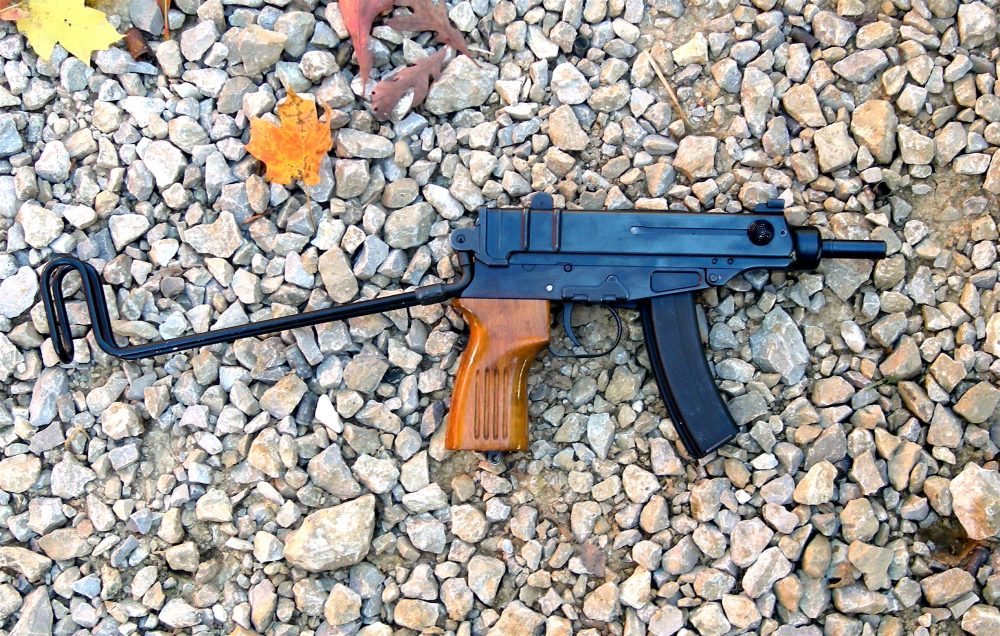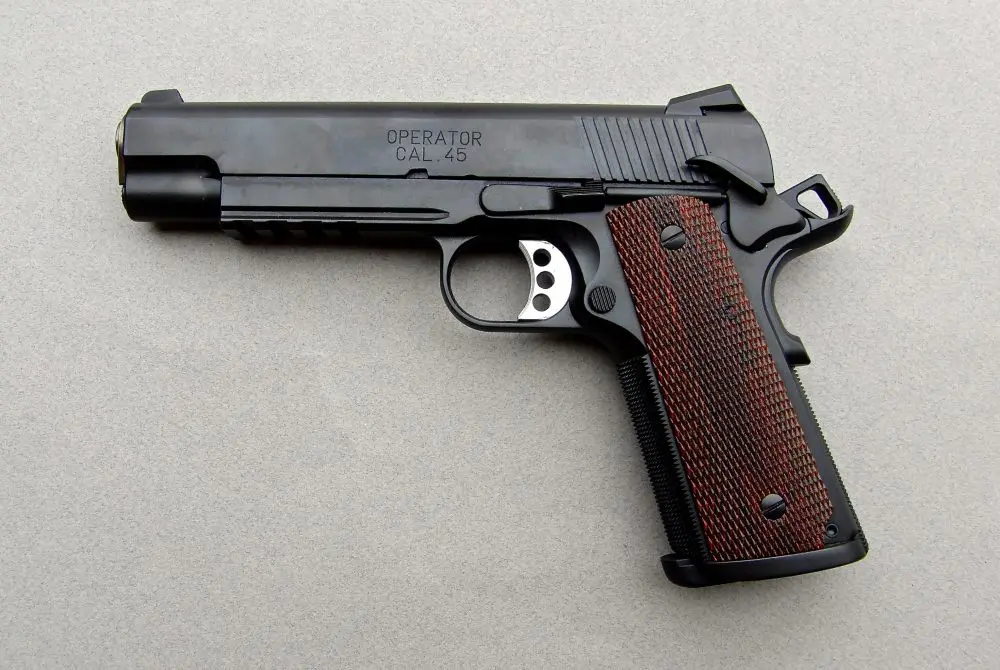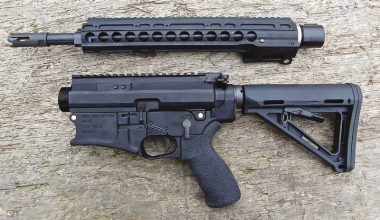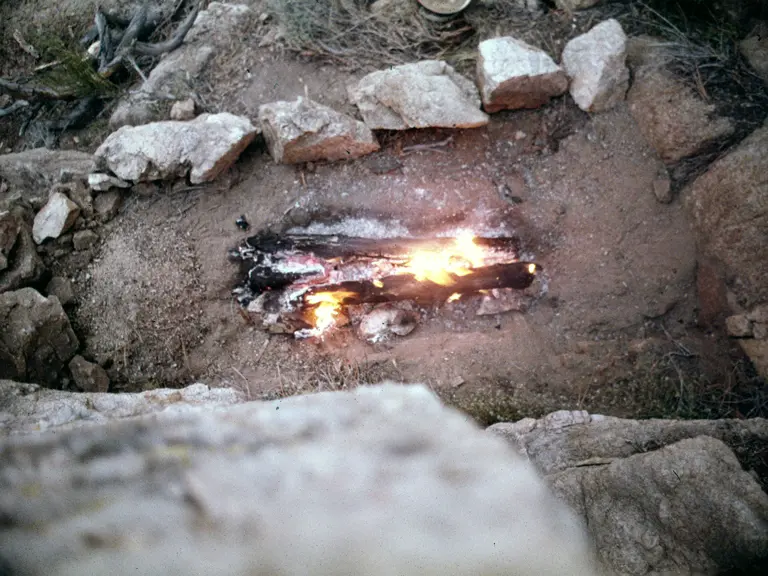Vz61 with stock folded. Small “buttons” are used for cocking the Skorpion.
The Czech Skorpion is a hard weapon to assign a purpose. It’s a machine pistol, which means it isn’t really a pistol or a submachine gun, though it’s usually classified with the latter. Although versions were reportedly made in .32 ACP, .380 ACP, 9x18mm Makarov, and 9x19mm (9mm Luger), in years of encountering the Skorpion, I have only seen .32 ACP versions.
Actually, those other versions are designated as Vz64 in .380, Vz65 in 9mm Makarov, and Vz68 in 9x19mm Parabellum. In the Vz61, you have an oversized weapon chambered for an underpowered cartridge. There is also the M84 version produced in Yugoslavia and later Serbia.
The .32 ACP chambering has some logic, as the weapon was originally used by Czech internal security units such as the StB (equivalent of the KGB) or the police, which also issued the Vz70 .32 ACP pistol.
During the Cold War, when I studied Warsaw Pact airborne and special forces units, Czech paratroopers were armed with the Vz61 for a time. Indonesian combat swimmers used the Vz61 as well, as did some Soviet Spetsnaz. It used to be encountered in Africa and South America in use with Marxist-oriented factions.
For use by security teams, Vz61 Skorpion does have some advantages: it is compact enough to handle within a vehicle, recoil is light enough that it can be controlled well on bursts within the vehicle, and there is less blast when it’s fired within the vehicle.
In fact, I first began training with the Vz61 for familiarity when I was doing close protection work. In South America and elsewhere, the Vz61 was popular with hit teams composed of a motorbike driver with a Vz61 gunner on the rear seat.
I also trained some VIP drivers who carried the Vz61 for use with one hand while driving. A few of them even became competent with it.
Over the last 30+ years, I’ve had enough chances to fire the Vz61 to become relatively familiar with it, so I’ll offer some opinions.
As machine pistols go, I rate many others more highly, especially the Stechkin and Glock 18. I would also rate the HK VP70 and Beretta 93R superior due to their 9x19mm chambering. I would probably even rate the Mauser Schnellfeuer ahead of the Vz61.
Vz61 with stock deployed.
Still, the Vz61 was quite possibly the most widely distributed machine pistol in the world and hence likely to be encountered in trouble spots. At least some U.S. Special Forces units received foreign weapons training with the Vz61.
On the positive side, the Vz61’s top folding stock is more ergonomic than the holster stocks used on most other machine pistols or the detachable skeleton stocks used on the Beretta 93R and Glock 18. Another positive for the Vz61 is that the .32 ACP chambering allows the Skorpion to be controlled more readily than other machine pistols.
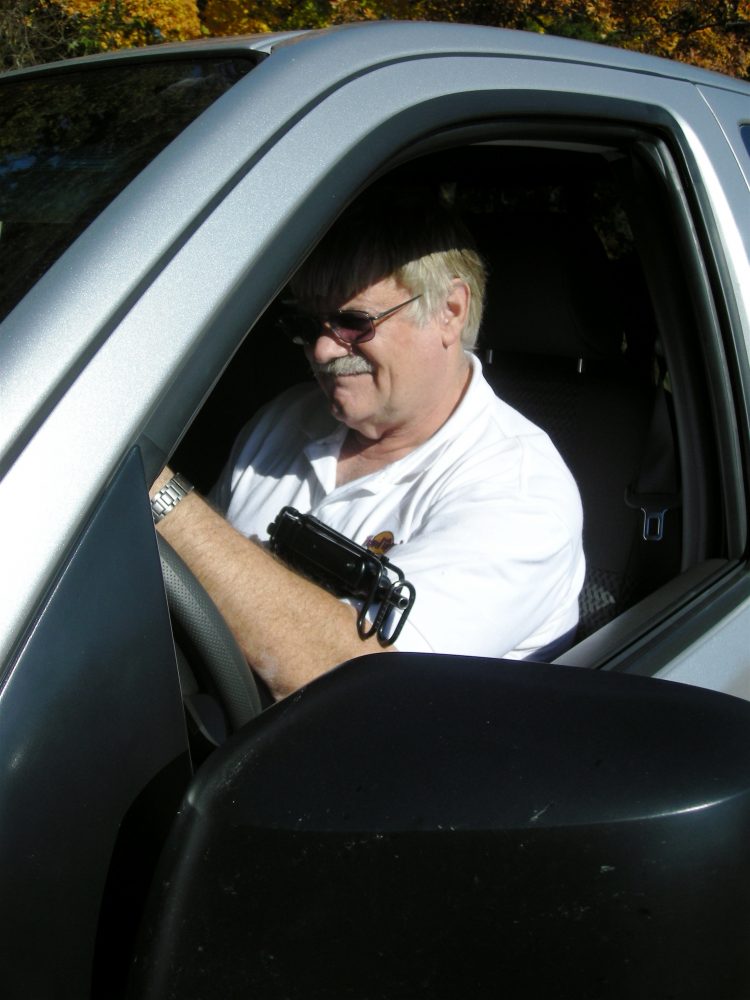
I’ve trained on counter-ambush scenarios firing a Vz61 in short bursts from within a vehicle and found that its compact size and light recoil permit effective engagement from the “shotgun” position in a vehicle.
Somewhat of a positive is the leather holster for the Vz61, which allows the Skorpion to be carried with the stock folded. For carrying in the holster, the ten-round magazine must be used. The larger capacity 20-round magazine would obviously be more effective in full-auto usage.
I have already mentioned many of the Skorpion’s negatives. In .32 ACP, the weapon is underpowered. Tactically, the best use of the Skorpion is in firing bursts. In effect, putting multiple .32 ACP bullets into an enemy is equivalent to firing a blast of 00 buckshot.
The folding stock is at best usable, but once again the light recoil keeps it from being uncomfortable in use. Sights are acceptable to 50 meters, which is about as far as I’ve ever fired the Skorpion. As with the AK, adjustments are made to the front sight.
For one-handed use, the grip-to-barrel angle is not very good. As a result, the Vz61 handles poorly one-handed and does not allow instinctive shooting. But to be fair, I know some who have experience with the Vz61 and like the pistol grip, finding it less fat than some other machine pistols that have the magazine well in the grip. I don’t agree.
I have fired the Skorpion one-handed on select fire and kept bursts on a silhouette target at 10 yards, but on semi-auto I have not done very well at 25 yards. Firing in semi-auto, the Vz61 may be used as an oversized and underpowered pistol using a two-handed hold. For accurate longer-range shooting, firing on semi-auto using the stock is probably most effective.
Since the magazine does not fit into the grip, as on many machine pistols, the 20-round magazine can get in the way. I normally rest my support hand on the front of the magazine well with fingers in the lightening cuts, but care must be taken that the hand does not stray in front of the short 4.5-inch barrel.
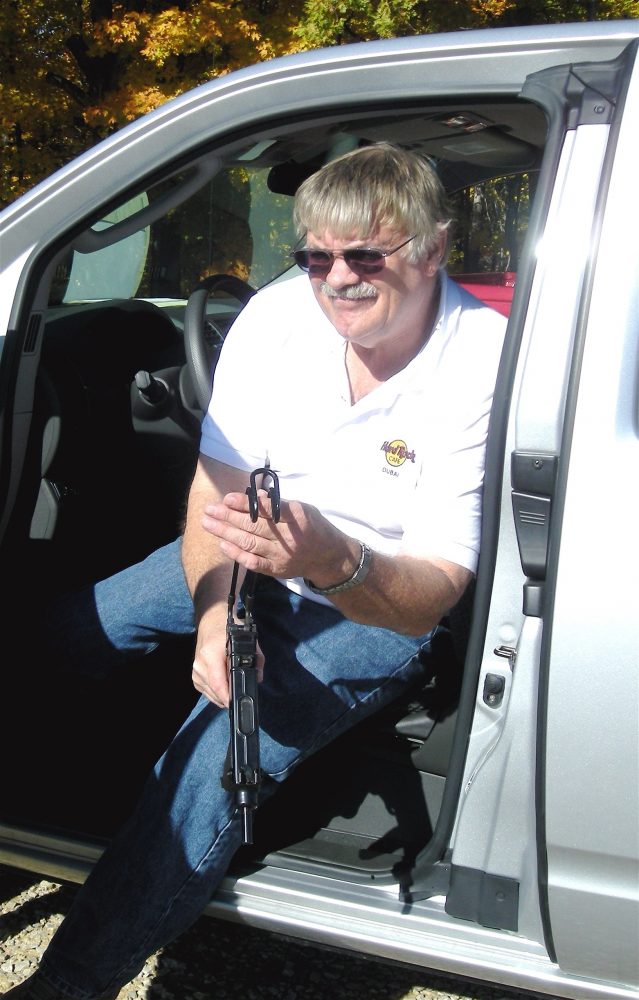
There isn’t a protective ridge around the magazine button, which could lead to it being hit inadvertently.
I also find the selector arrangement a bit counterintuitive. Unlike most selectors, on which the safe position is farthest to the rear, on the Vz61, safe is in the middle position, with semi-auto (“1”) rearmost, then safe, and full-auto (“20”) farthest forward. The lever is large enough that it is easy to operate.
Assuming the Skorpion is carried with the stock folded over the top of the weapon, to bring it into action it is necessary to hit the small release button, then slap the stock up and back into the locked position. With practice, it can be done relatively quickly.
I have also found that the small cocking buttons on the bolt are somewhat hard to pull back when cocking the closed-bolt weapon. The Skorpion is a blowback design. The trigger guard is large enough to allow use with gloves, which can be a plus.
As with the Franchi SPAS-12, the Vz61 is a popular weapon in films and television. Occasionally, they get it right and have the Vz61 as a signature weapon with terrorists, as a lot of Czech weapons found their way into terrorist hands in the day.
In other cases, the Vz61 seems to be used because it appears “tactical.” I remember, for example, in the film remake of Get Smart, Agent 99 was armed with a Vz61! At least it would fit in the phone booth elevator.
I used to teach a class for individuals who were going to be working in dangerous places. On the more advanced version of this class, if I could arrange access to a Vz61, I included it in the weapons familiarization section on how to pick up an enemy weapon and turn it on them.
As mentioned earlier, I also encountered the occasional “Emerging Nation” protective team that used Vz61s, so I had to develop rudimentary tactics for their use. Basically, these consisted of shooting burst “zippers” to maximize the .32 ACP round.
Recently, a semi-auto pistol version of the Vz61 has been available in the U.S. To use the stock, the weapon would have to be registered as an SBR. I can say without hesitation that I have not been tempted to acquire one.
Still, the Skorpion is a classic example of the machine pistol. If you get a chance to shoot one, by all means do so.



